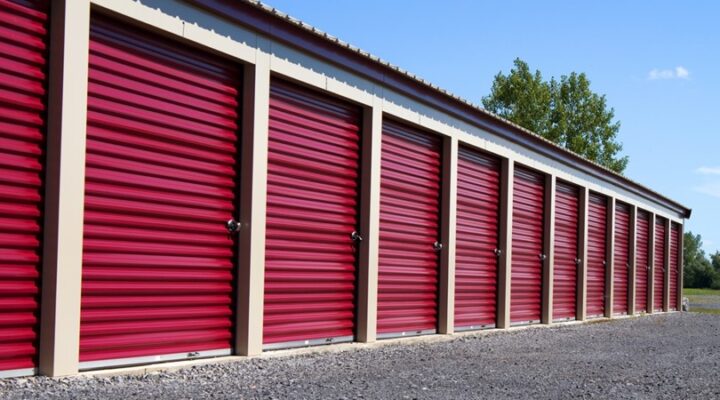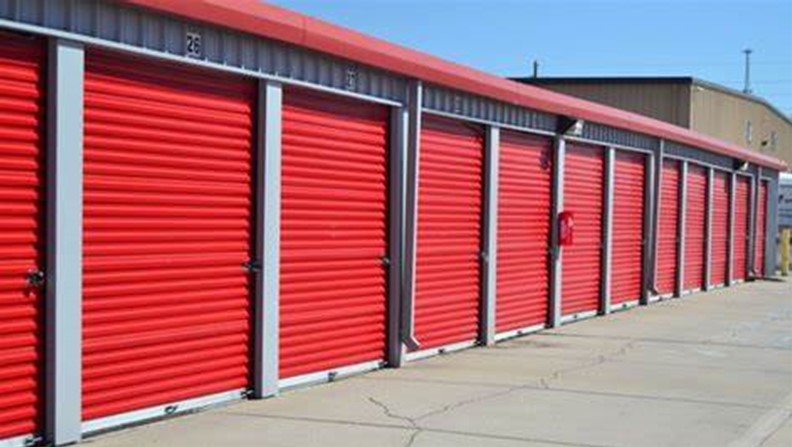
Disposing of household or business items can sometimes be quite a problem. If you live in a house with a large basement or attic or have a spacious and secured warehouse, you can put your stuff off. But when you lack space, you can keep your belongings in self storage.
You think of starting a business. In that case, you can take advantage of the lack of space in houses or apartments and start a self-storage business. You can visit website of any local storage facility and make sure that the demand for this space is on the rise. This business can bring significant profits, especially if you choose a good location and offer good renting terms.
Market Research
Local market research should be the basis of any business idea. Before you start, you need to know what you can offer to the market, and is there any demand for that. The self-storage business is experiencing expansion worldwide. The fastest growth is in developed and urban areas. If you live in some of these, you have a good start point.
Base your research on the number of inhabitants of the area you want to develop your business. Consider potential migrations, especially if you are building or buying a storage facility in an industrial area. Research daily vehicle traffic too. Keep in mind that most renters will be locals, within a radius of 5 miles.
Besides, it’s necessary to check the competition. See the offer of other local warehouses, prices, locations, and renting storage conditions. These will be the guidelines you will base your offer on.
Plan Your Budget and Financing
How much money you will invest in this business depends on whether you plan to work with small or large storage units. Once you determine this, you can consider the benefits of buying an existing self-storage facility or building it from the ground up.
If you think of the second option, see below what you should think about:
https://www.sparefoot.com/self-storage/news/44-advice-for-self-storage-investors/
Once you make these decisions, you need to set a budget and find a way to get the most favorable funding. An ideal situation is when you have enough cash to buy or build self-storage, but that is a rarity. Other solutions are to get a loan or team up with investors.
Suppose you are eligible for a self-storage loan. In that case, you must know that most lenders require a down payment, usually about 10 percent. They ask for a credit history and a business track record. Keep in mind that the loan amount should be enough to start and run a business for the first few months.
Besides the initial investment, think of ongoing costs. You’ll have them from day one, even though you haven’t developed your business yet. There are utilities, staffing, maintenance, advertising costs, security, and so on. The calculation is not simple because it should answer whether your business will be profitable. So it’s best to have this feasibility study done by an expert.
Make a Business Plan
You have determined in which direction your self-storage business will go and that you have money for initial costs. Now, it’s time for a business plan. If you are still in negotiations to get a loan to start a self-storage, keep in mind that most lenders will ask for this paper.
A business plan is not an official document, but you need it. Go online and look for templates to make this paper yourself. If you don’t have a clue what business plan is about, hire an expert to help you. This paper should contain some basics like sources of capital, ownership structure, employee obligations, SWOT analysis, marketing and pricing strategy, and many other items.
One of the most important things to consider and put in a business plan is the estimate of revenues and expenses for some future period. Most revenues will come from renting units. But you can also earn from auctions of seized units, fees, and sale of things related to storage business (packing supplies, containers, etc.).
Develop a Marketing Strategy

In order to attract renters and become competitive, you need to present your offer to the market. If you are new, you need a way to stand out and make the clients remember and distinguish you from others. You need to approach them in several ways without being too intrusive.
Going online is something you should go for. But don’t rely on advertising that Internet users find boring, such as pop-ups. Having you always and everywhere is not a guarantee that you will attract someone’s attention.
Instead, focus on making an engaging and user-friendly website with quality content. Make sure to have photos and videos, because they get more attention than plain text. Don’t forget social media ads, which can generate many visits and many potential clients.
Before Opening
While furnishing the storage facility, you should complete bureaucratic tasks (registering a company, getting licenses, opening an account, etc.). If you are building self-storage from the ground up, make sure to have all permits before construction begins.
After equipping the storage units, think about their protection. Some people will keep valuable or delicate stuff there. They must rest assured once they leave their belongings in storage units. So you need a reliable security system. Also, make sure to offer the option of insurance to renters. Get the liability policy from a local insurance company.
The climate control system is another investment before you run your business. Most people are ready to pay more for keeping their stuff in air-conditioned units. Renters who want their stuff to remain intact will look for this type of storage to prevent damage due to high humidity, mold, pests, etc.
The reasons why people move their stuff from homes are many. Maybe they plan to move, renovate, put away something worth, or just need a space to keep their hobby equipment. These are all reasons why the self-storage business is booming. If you think of starting a business, maybe this is your chance.
Leave a Reply